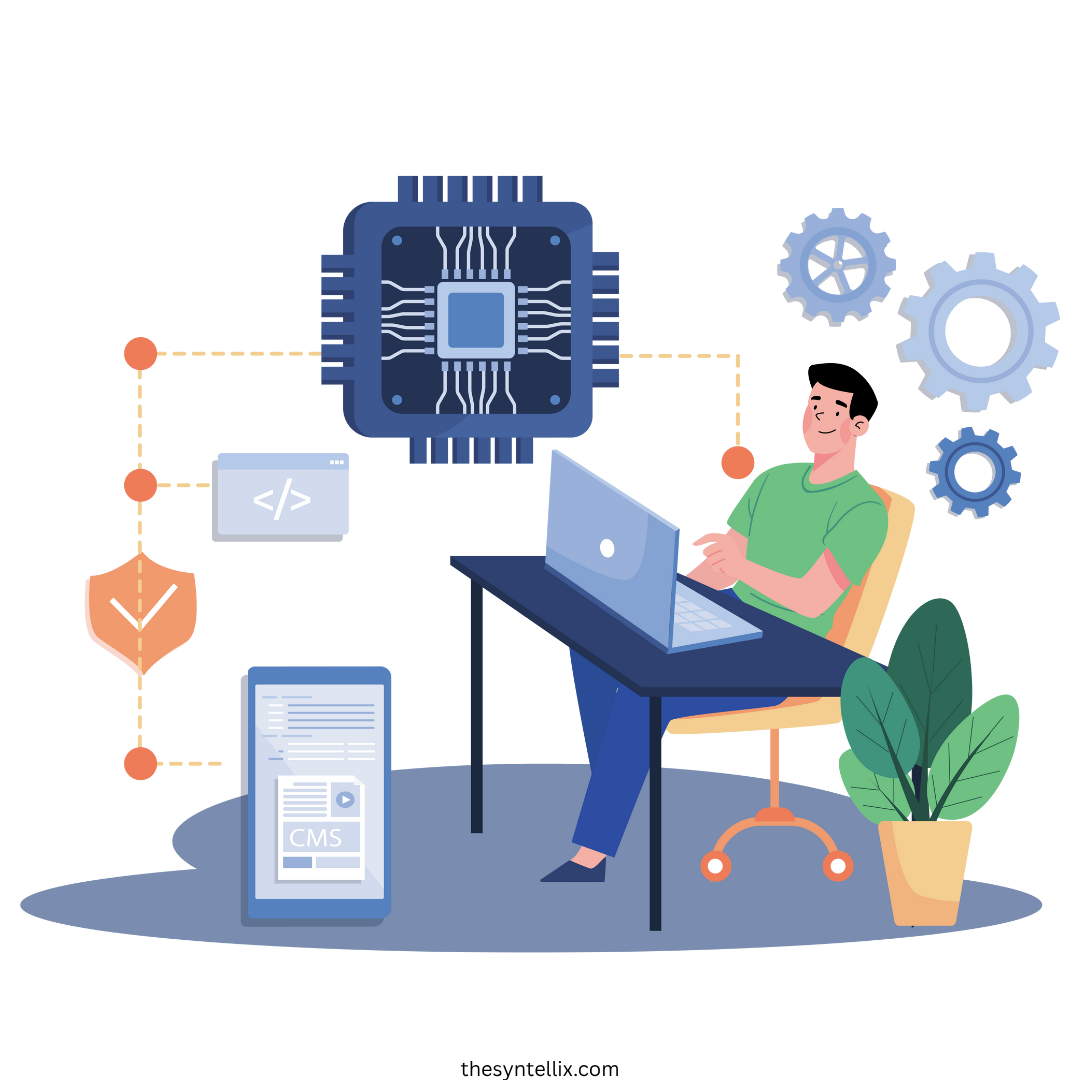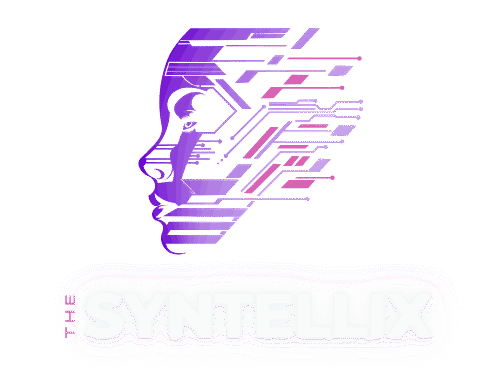Imagine a world where doctors can instantly analyze patient records, predict diseases, and communicate seamlessly with AI-powered systems.
Natural Language Processing (NLP), a branch of artificial intelligence (AI), is making this a reality in healthcare. From automating clinical documentation to enabling predictive analytics, NLP is revolutionizing how healthcare professionals work and improving patient outcomes.
In this comprehensive guide, we will explore everything you need to know about Natural Language Processing(NLP) in healthcare, including its applications, benefits, challenges, and future trends.
Lets gets started!
What is Natural Language Processing (NLP)?
Natural Language Processing (NLP) is a technology that enables machines to understand, interpret, and generate human language through deep learning, machine learning, and text analytics. Natural language processing can be used in many computer science applications such as automated question answering, sentiment analysis, automatic text summarization etc.
By enabling computers to understand human language, we can easily manage customers feedback, make better decisions through computers.
Key Techniques in NLP
- Tokenization: Breaking text into individual words or phrases.
- Sentiment Analysis: Determining the emotional tone of text (e.g., positive, negative, neutral).
- Named Entity Recognition (NER): Identifying key entities like names, dates, and medical terms.
- Machine Translation: Converting text from one language to another.
- Text Summarization: Condensing long documents into shorter summaries.
How NLP Works
Natural Language Processing (NLP) works by helping computers understand and work with human language. It breaks down sentences and words into parts that machines can analyze.
At first, NLP tools clean the text. This step removes punctuation, lowercases everything, and gets rid of common words like “and” or “the” (called stop words).
Then, it splits the text into words (tokenization) and tags each word with its role like noun, verb, or adjective (part-of-speech tagging).
Next, NLP systems than understand the meaning and context of the words. They use steps like:
- Named Entity Recognition (NER): Identifies names of people, places, companies, etc.
- Dependency Parsing: Maps how words relate to each other in a sentence.
- Lemmatization: Turns words into their root forms (e.g., “running” becomes “run”).
- Sentiment Analysis: Detects emotion positive, negative, or neutral behind the text.
- Language Modeling: Predicts what comes next in a sentence using context.
Advanced NLP models like transformers (e.g., GPT, BERT) learn these steps by training on large amounts of text.
They look at how words appear together and learn patterns, helping the system respond in a way that feels more human. This is how NLP turns language into something a machine can understand and uses.
Natural language processing NLP in Healthcare
Natural language processing in healthcare enables computers to understand and deeply analyze human language in clinical documentation, patient communication, and disease diagnosis fields.
NLP can take important data from Electronic Health Records (EHRs), improve decision-making abilities of healthcare professionals, and also enhance patient care by facilitating access to information and streamlining workflows.
Healthcare NLP (Natural Language Processing) use advanced AI engines designed to analyze huge volumes of unstructured clinical data physician notes, lab reports, and imaging summaries transforming them into actionable insights.
By applying machine learning to medical records, these systems detect miscoded patient conditions with remarkable precision.
Applications of NLP in Healthcare
Natural Language Processing (NLP) helps healthcare systems to understand and use the massive amount of text data found in medical records, doctor notes, lab reports, and more.
Instead of just storing information, NLP allows computers to read and analyze it like a human would. This means doctors and hospitals can quickly find important insights without digging through pages of documents.
For example, NLP can automatically pull out details like patient symptoms, medication history, or test results from unstructured text.
Here are some common uses of NLP in healthcare:
- Clinical documentation improvement: NLP helps reduce the time doctors spend writing notes by turning speech into structured medical records.
- Medical coding and billing: It extracts key terms from patient records to ensure accurate coding for insurance claims.
- Predictive analytics: NLP identifies patterns in patient data that can warn of risks, like readmissions or disease progression.
- Patient sentiment analysis: Hospitals use NLP to analyze patient reviews and feedback for quality improvements.
- Research and drug discovery: It scans vast medical literature to help researchers find relevant studies or discover new drug targets.
NLP is helping healthcare move faster, reduce errors, and improve patient care—making it one of the most valuable AI tools in modern medicine.
Benefits of NLP in Healthcare
- Detects mental health signals
NLP can analyze how patients talk or write and flag signs of anxiety, depression, or stress early. - Identifies hidden symptoms
It reads doctors’ notes and picks up important symptoms that might not be in structured data fields. - Reduces doctor burnout
NLP tools convert speech to notes and automate documentation, saving doctors hours of typing. - Finds rare disease cases
It searches through thousands of records quickly to spot unusual or rare disease patterns. - Enables voice-to-text documentation
Doctors can speak naturally, and NLP converts it into accurate, real-time patient records. - Improves billing accuracy
It reads clinical language and matches the right codes, reducing billing errors and missed claims. - Tracks disease outbreaks
NLP scans reports and social data to detect early signs of infectious disease spread in specific regions. - Supports personalized medicine
It helps tailor treatments by analyzing each patient’s health story, not just lab results. - Detects inconsistent diagnoses
NLP finds mismatches in records across departments, helping hospitals maintain better quality care. - Enhances medical training
It can turn real-world cases into summaries for students and doctors to learn faster and more effectively.
Challenges of NLP in Healthcare
One major challenge is the complexity of medical language. Healthcare professionals use terms that vary across specialties, institutions, and even countries.
Acronyms, shorthand, and context-specific meanings can confuse standard NLP models. For example, “PT” could mean “physical therapy” or “patient,” depending on the setting.
NLP tools must understand these differences accurately to avoid misinterpretation and errors in care.
Another big issue is data privacy and security. Healthcare records contain sensitive information protected by strict laws like HIPAA in the U.S. This makes it difficult to access large, diverse datasets needed to train robust NLP systems.
Even when data is available, it’s often unstructured like handwritten notes or free-text reports which makes it hard for machines to process. Other key challenges include:
- Lack of annotated data: Labeling medical data for training NLP models is time-consuming and requires expert input.
- Bias in datasets: If models are trained on biased data, they may perform poorly on diverse patient populations.
- Integration with clinical workflows: NLP tools must fit into a doctor’s daily routine without causing extra burden.
- Constant updates in medical knowledge: NLP systems must keep up with evolving terms, treatments, and research.
Despite these hurdles, researchers and companies are working to make NLP more accurate and reliable in healthcare. As technology improves, so will its impact on patient care—provided we solve these core challenges first.
Future Trends in NLP for Healthcare
1. Personalized Medicine
NLP will play a key role in personalized medicine by analyzing patient data and providing tailored treatment plans.
2. Real-Time Data Processing
Real-time NLP tools will enable instant analysis of patient data during consultations, improving decision-making and patient outcomes.
3. Interoperability
NLP will help integrate data across different healthcare systems and platforms, ensuring seamless communication and collaboration.
4. Telemedicine
NLP-powered chatbots and voice assistants will enhance telemedicine by providing virtual care and support to patients.
5. Wearable Devices
NLP will analyze data from wearable devices, enabling continuous health monitoring and early detection of potential issues.
Case Studies: NLP in Action
1. Mayo Clinic
The Mayo Clinic uses NLP to extract data from clinical notes and improve patient outcomes. Their NLP tools help doctors quickly access relevant information and make informed decisions.
2. IBM Watson Health
IBM Watson Health leverages NLP to analyze medical literature and assist in cancer treatment. Their AI-powered system provides evidence-based recommendations to oncologists.
3. Google Health
Google Health is developing NLP models to predict patient outcomes and reduce readmissions. Their tools analyze EHRs and other data sources to identify at-risk patients.
Tools and Technologies for NLP in Healthcare
1. NLP Platforms
- Google Cloud Healthcare API: For analyzing medical data and integrating with EHRs.
- Amazon Comprehend Medical: For extracting insights from clinical text.
2. Open-Source Libraries
- spaCy: A popular library for natural language understanding.
- Hugging Face Transformers: Provides pre-trained NLP models like BERT and GPT.
3. EHR Integration Tools
- Epic Systems: Integrates NLP with electronic health records to enhance clinical documentation.
- Cerner: Uses NLP to improve data accuracy and streamline workflows.
FAQs About NLP in Healthcare
Q: What is NLP in healthcare?
A: NLP is a technology that enables machines to understand and analyze human language in healthcare settings.
Q: What are the benefits of NLP in healthcare?
A: Improved efficiency, enhanced patient care, and reduced administrative burden.
Q: What are the challenges of NLP in healthcare?
A: Data privacy, language variability, and integration with existing systems.
Q: What are some applications of NLP in healthcare?
A: Clinical documentation, patient data extraction, and predictive analytics.
Q: What is the future of NLP in healthcare?
A: Personalized medicine, real-time data processing, and telemedicine.
Conclusion
Natural Language Processing (NLP) is transforming healthcare by improving efficiency, enhancing patient care, and enabling data-driven decision-making. From automating clinical documentation to enabling predictive analytics, NLP is revolutionizing how healthcare professionals work and improving patient outcomes.
As we move into 2025, the potential of NLP in healthcare is limitless. Whether you’re a healthcare professional, a tech enthusiast, or someone curious about AI, now is the time to explore how NLP can benefit your organization and improve patient care.
So, what are you waiting for? Start exploring NLP in healthcare today and take the first step toward a smarter, more efficient healthcare system. Share your thoughts or questions in the comments below!
External Links:

Stay ahead of the curve with the latest insights, tips, and trends in AI, technology, and innovation.

